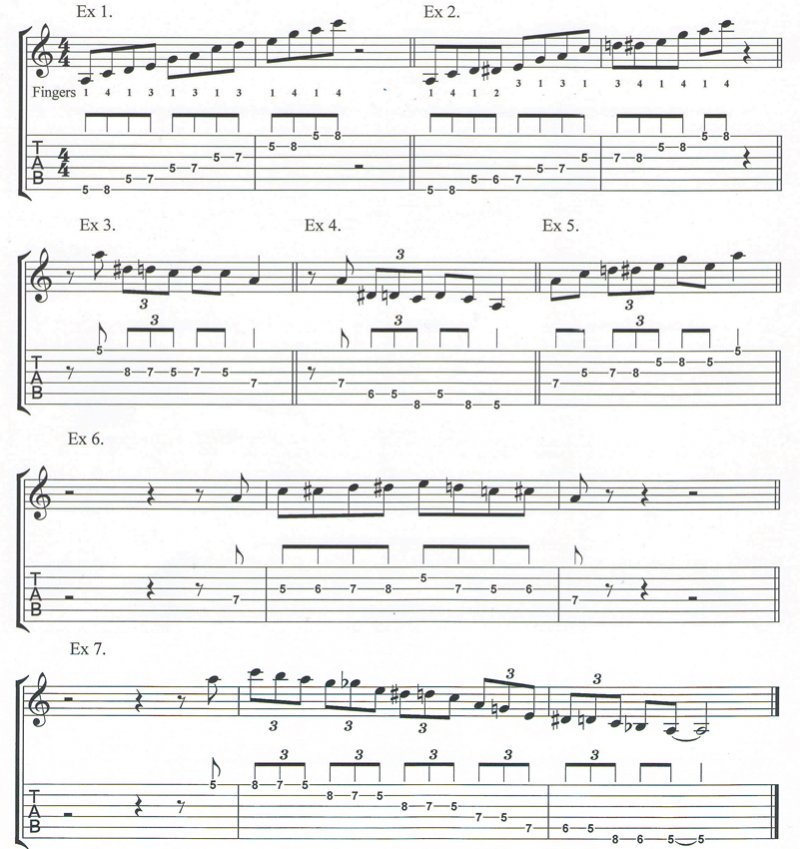Guitar Cool: Blues Scale Primer
Guitar Cool: Blues Scale Primer
The minor pentatonic scale is a favourite scale for rock guitarists to get ideas for soloing, with the Blues scale being a close second. Many beginning players tend to overplay the minor pentatonic sound – so that it gets boring after a while – without realising that they can extract some great ideas from the blues scale with minimal extra effort.

The only difference between the two scales is the notes – the A minor pentatonic scale contains the notes A, C, D, E, and G, while the A blues scale contains the notes A, C, D, D#, E, G. Notice the difference? The blues scale has only one more note – D# – but it can make a considerable difference to the sound.
If you look at Excercise 1 you can see the most basic form of the minor pentatonic scale, with the blues scale in Ex 2. Make sure you know these two scales well and follow the correct fingerings for the two scales if you haven’t played them before.
In the following exercises I have written out a few really cool licks for you to get into your head and fingers. By getting them into your head and fingers I mean for you to be able to play them well, have them memorised so you can play them on a gig or jam session, and be able to hear them because you will hear licks similar to these ones all the time in all different genres of music, not just blues
Ex 3. Is a lick that gives a real bluesy sound and you will hear this lick in all types of rock and blues music. Watch out for the string skip between the first and second notes as it can be tricky if you are not used to it. The triplet figure on beat two can be played or done with a pull off if you want.
Ex 4. Is the same lick as the previous one, but played down one octave. Make sure to use the same fingerings as outlined in the scale above.
Ex 5. Uses the blues scale in an ascending fashion and is heard a lot in modern recordings. Also, try this lick in reverse or down one octave as in Ex 4.
Ex 6. This is a more complicated lick that uses some passing tones, but sounds great. The chromatic movement makes it sound a bit jazzy.
Ex 7. Is a great ending lick that you really need to know. Just pick each group of triplets and pull off the other two notes of the group that are on the same string, which will give the lick a smooth flow. It is not an easy lick though, so it might take some time to really get to flow.
I recommend that you get these licks into your head and hands and then try them out on your favourite rock, blues or funk tracks in the key of A.
For playing in other keys, just move them up or down the fret-board according to whatever key you are playing in. To hear what this lesson sounds like visit http://www.guitar.co.nz/category/resources/freelessons/
Kevin Downing is a professional guitarist, teacher, and author. He can be contacted through his website at www.guitar.co.nz or through PO Box 4586, Palmerston North, 4442. Ph (06) 357 0057.
